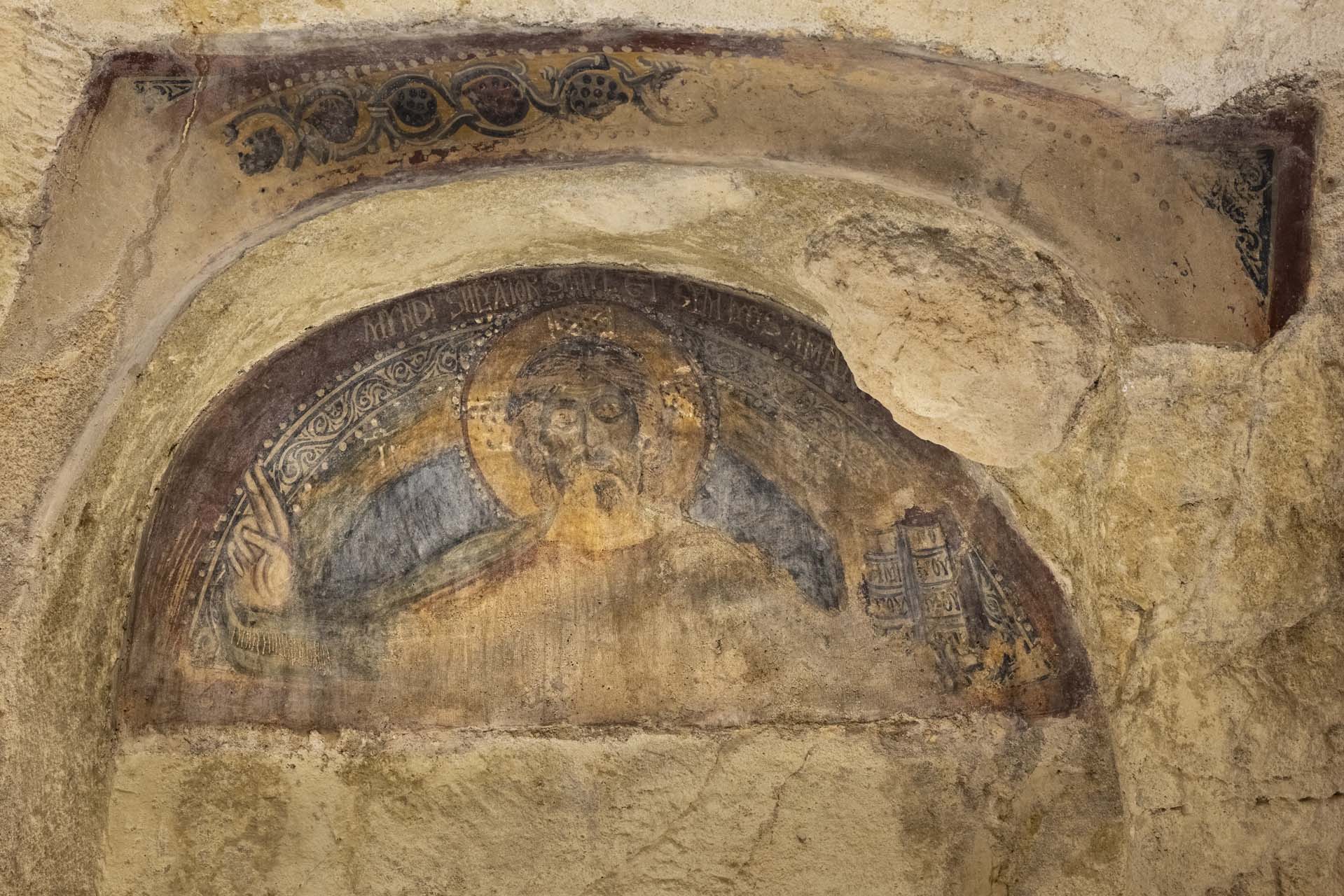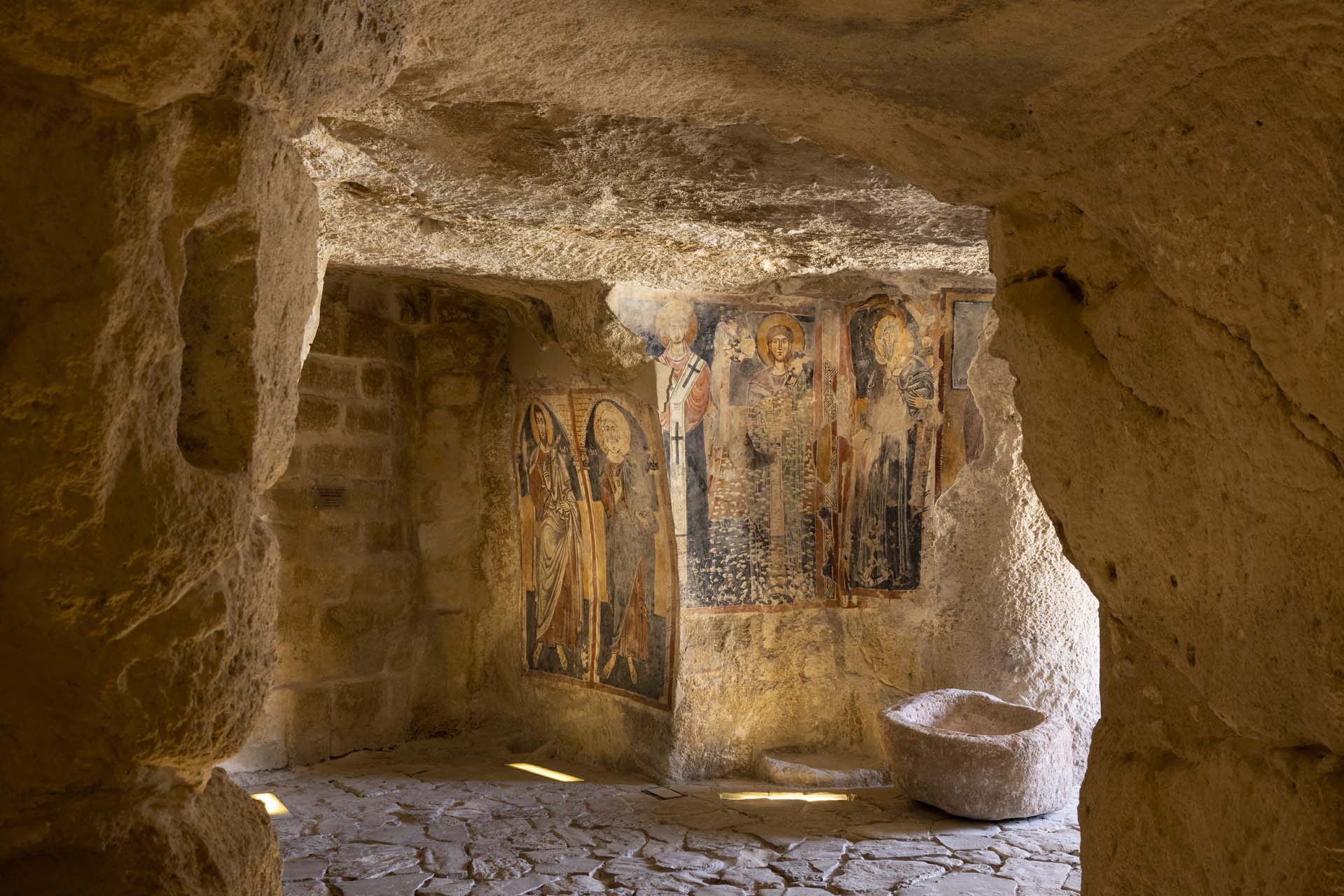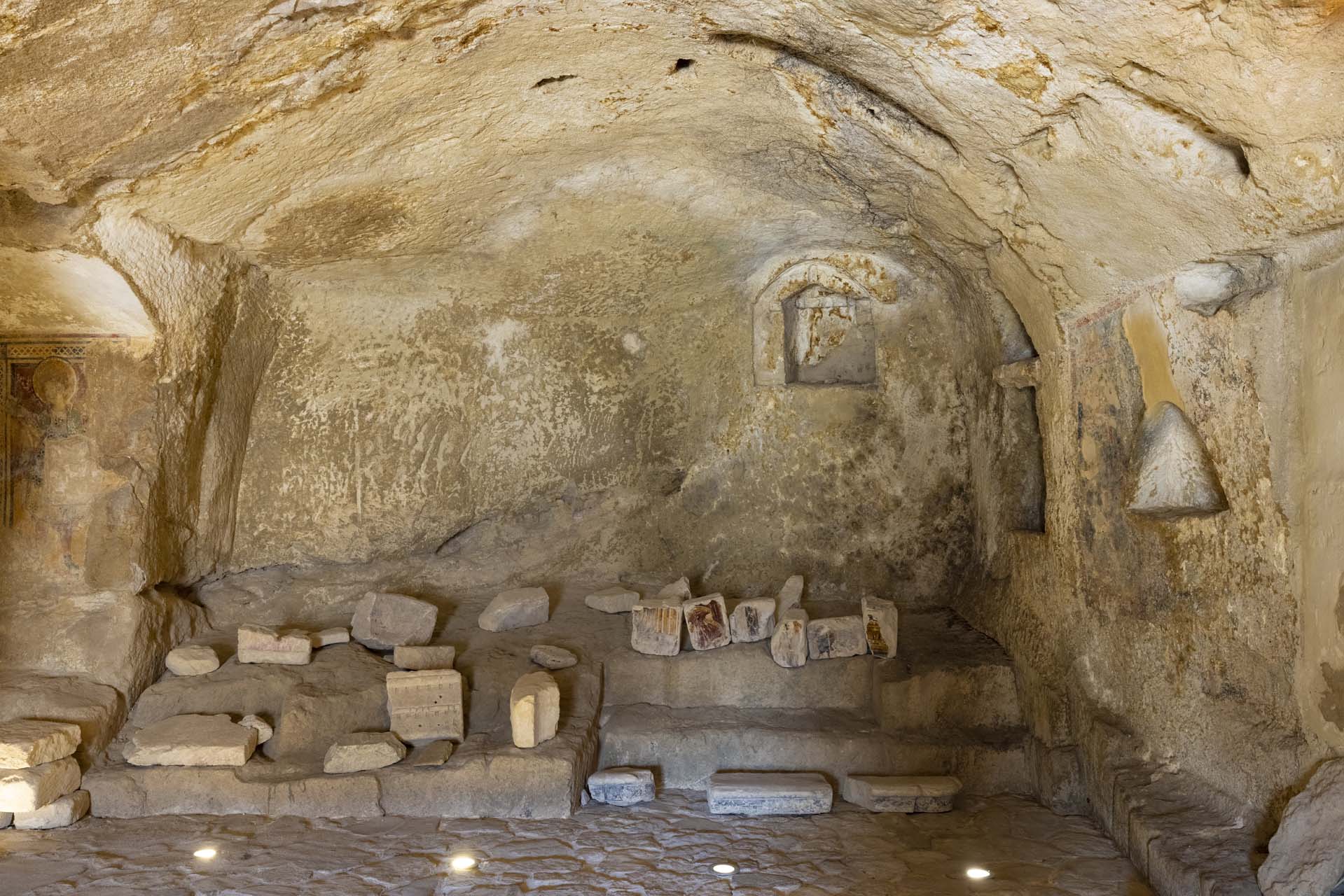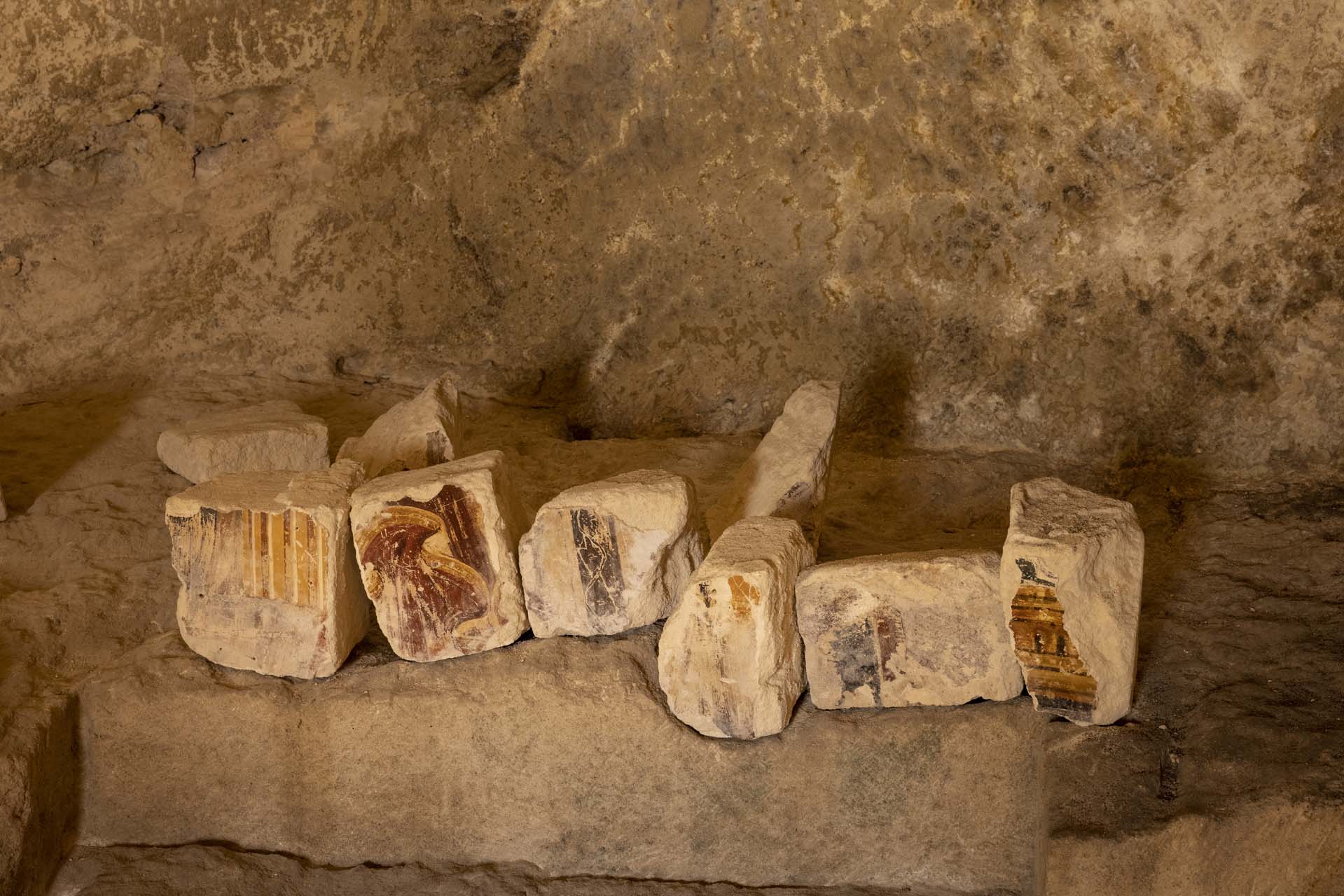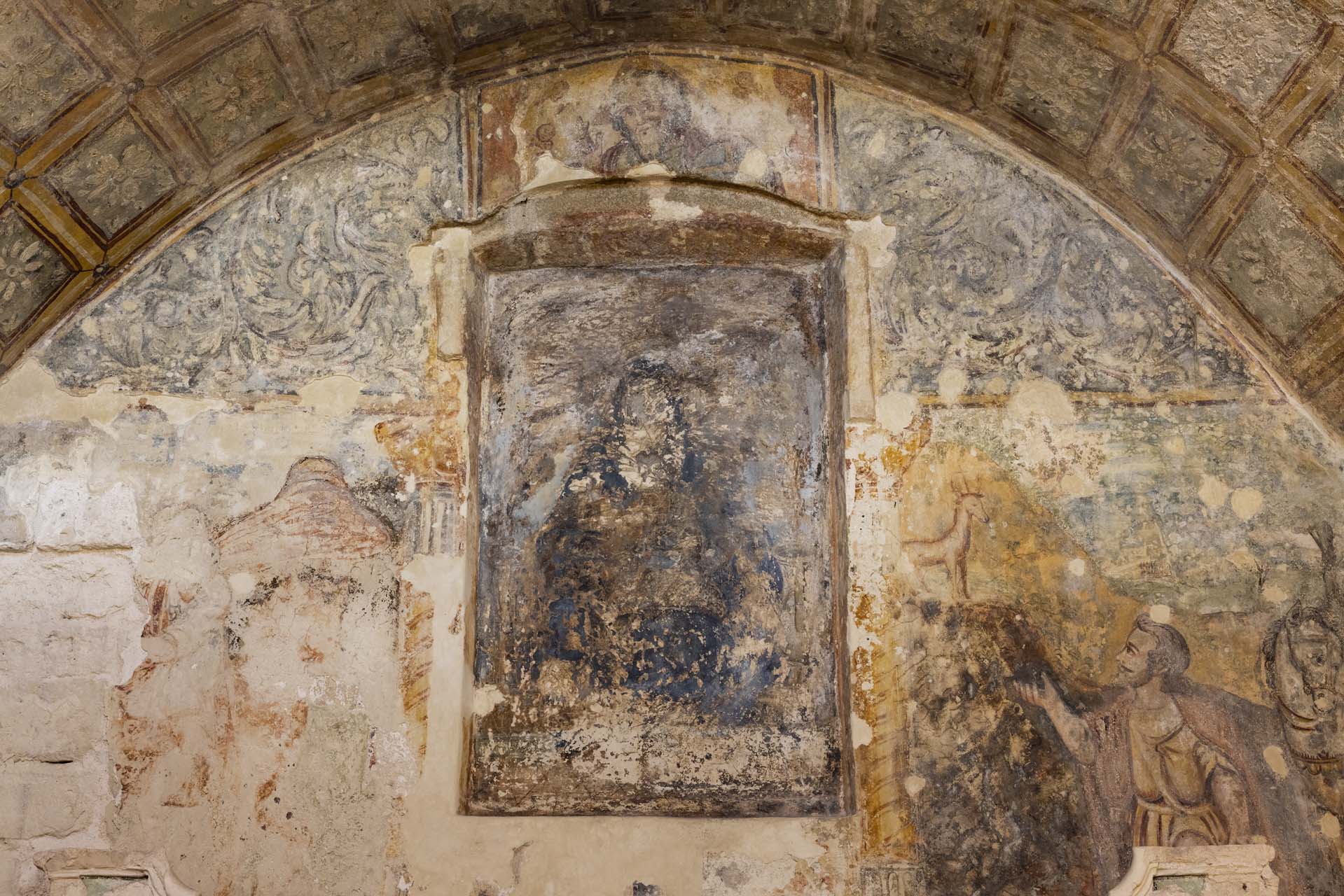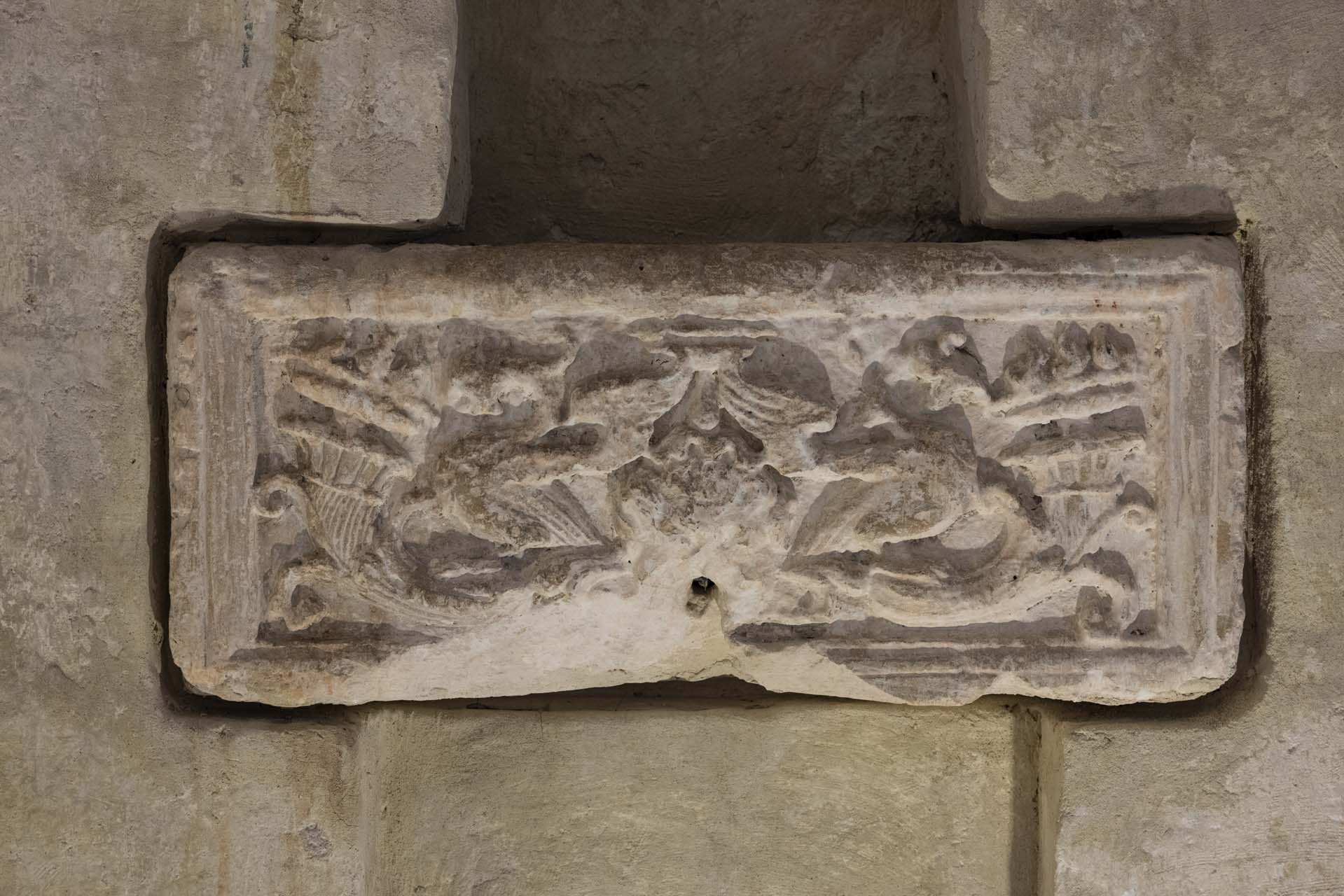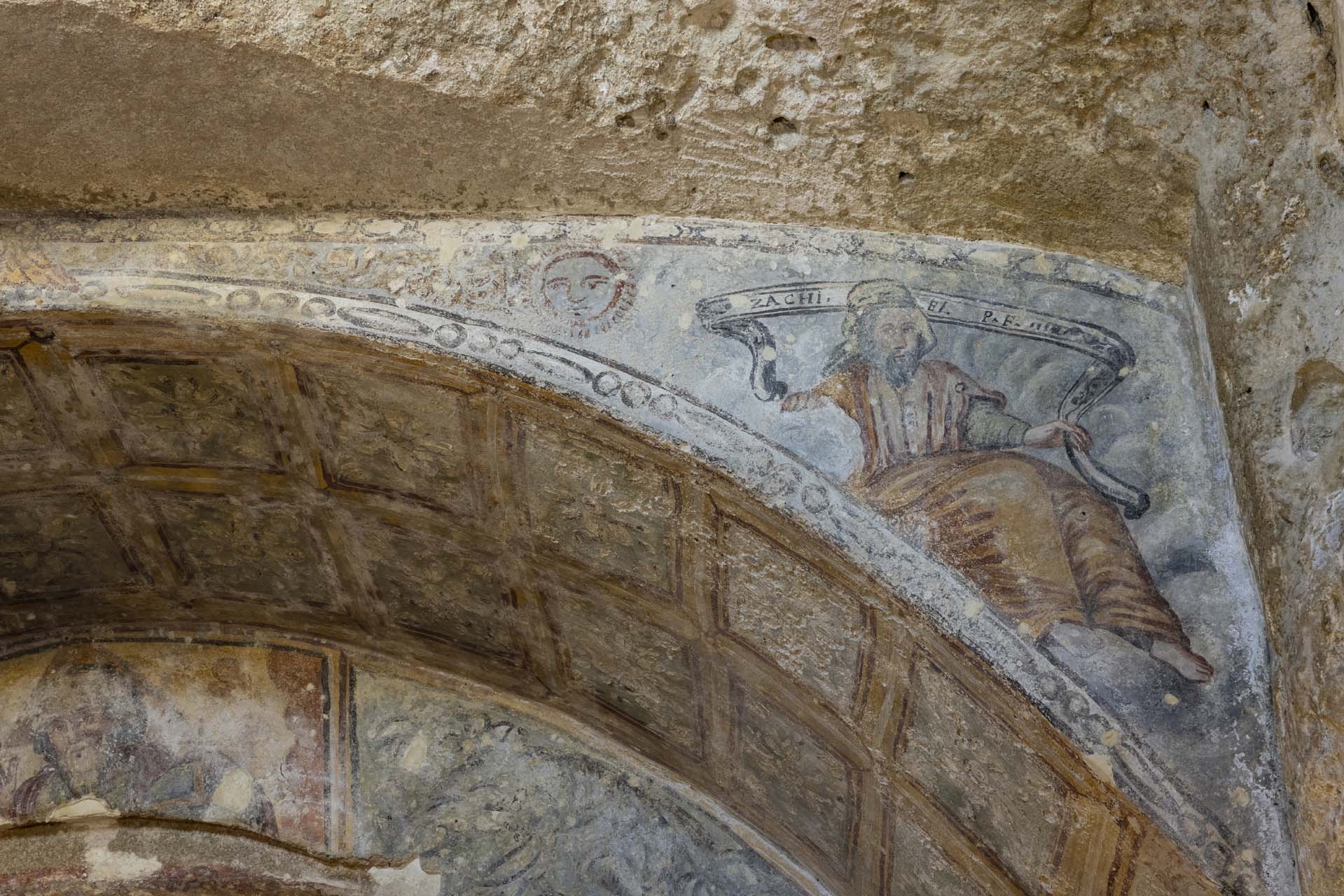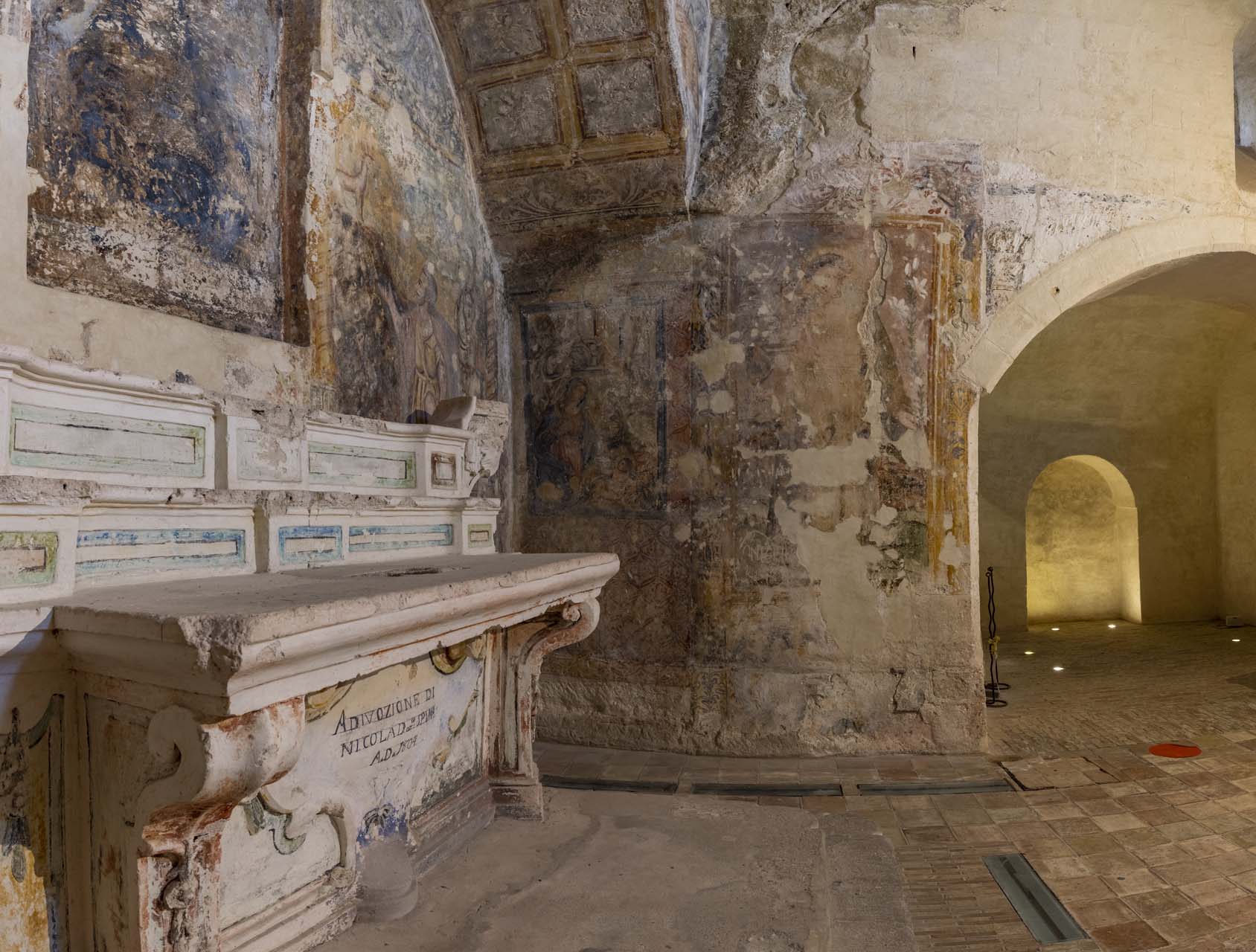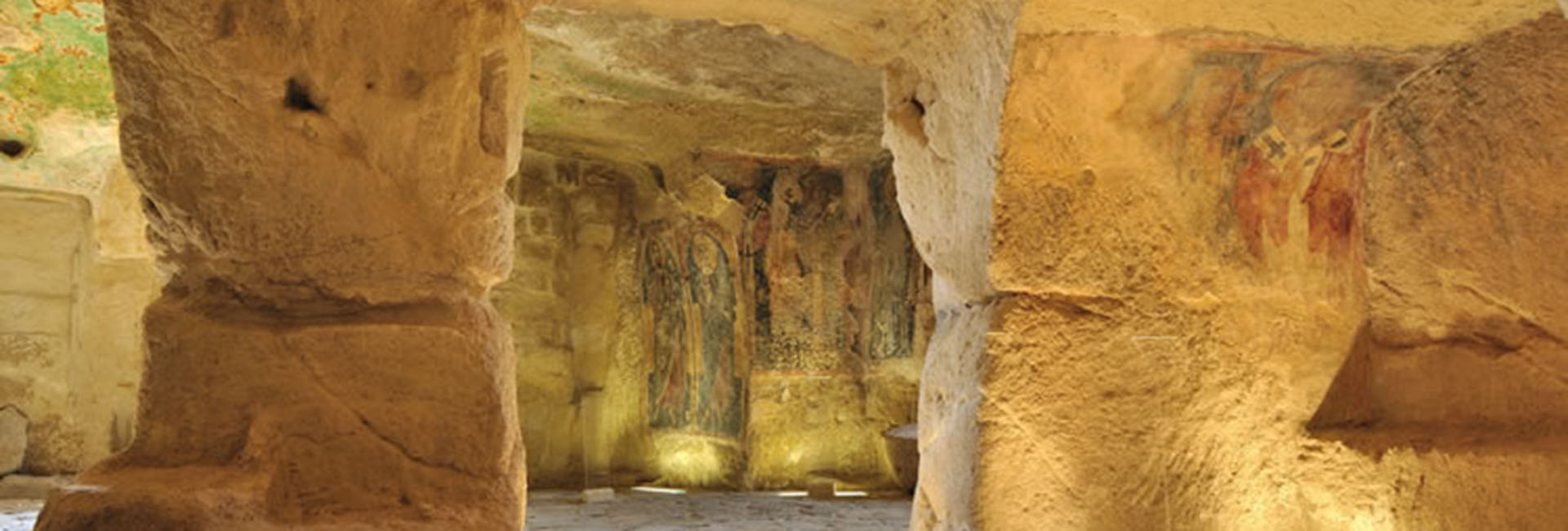Santa Maria de Idris
The Church of Santa Maria De Idris is located in the upper part of the rocky spur of Montirone (or Monterrone), near San Pietro Caveoso. The location is beautiful and offers a unique view of the city and the Gravina.
The church of Santa Maria de Idris dates back to the fifteenth and fifteenth century and is part of a rock complex that also includes the oldest crypt, dedicated to San Giovanni in Monterrone. This crypt is important for the frescoes it preserves, ranging from the 12th to the 17th centuries. The two churches are communicating.
The name of the temple – Idris – almost certainly derives from the Greek Odigitria (guide of the street, or of the water). In Constantinople the Virgin Mary was so called and venerated, whose cult was introduced in southern Italy by the Byzantine monks. The church has an irregular plan and is characterized by two distinct parts: one built and one excavated. The façade, modest and made of tuff, was rebuilt in the fifteenth century, following a collapse.
It is embellished by a small but elegant bell tower. The interior is made up of a single room and has some fairly fine frescoes, partly damaged by time and neglect.
The altar is embellished with a seventeenth-century tempera, depicting the Madonna with the Child; on the right are Saint Anthony’s paintings, the Holy Family and the Conversion of Saint Eustace.
To the left of the altar is an Annunciation, to the right a Crucifixion.


